Long Bao Le
Automatic Structured Pruning for Efficient Architecture in Federated Learning
Nov 04, 2024Abstract:In Federated Learning (FL), training is conducted on client devices, typically with limited computational resources and storage capacity. To address these constraints, we propose an automatic pruning scheme tailored for FL systems. Our solution improves computation efficiency on client devices, while minimizing communication costs. One of the challenges of tuning pruning hyper-parameters in FL systems is the restricted access to local data. Thus, we introduce an automatic pruning paradigm that dynamically determines pruning boundaries. Additionally, we utilized a structured pruning algorithm optimized for mobile devices that lack hardware support for sparse computations. Experimental results demonstrate the effectiveness of our approach, achieving accuracy comparable to existing methods. Our method notably reduces the number of parameters by 89% and FLOPS by 90%, with minimal impact on the accuracy of the FEMNIST and CelebFaces datasets. Furthermore, our pruning method decreases communication overhead by up to 5x and halves inference time when deployed on Android devices.
PureDiffusion: Using Backdoor to Counter Backdoor in Generative Diffusion Models
Sep 20, 2024Abstract:Diffusion models (DMs) are advanced deep learning models that achieved state-of-the-art capability on a wide range of generative tasks. However, recent studies have shown their vulnerability regarding backdoor attacks, in which backdoored DMs consistently generate a designated result (e.g., a harmful image) called backdoor target when the models' input contains a backdoor trigger. Although various backdoor techniques have been investigated to attack DMs, defense methods against these threats are still limited and underexplored, especially in inverting the backdoor trigger. In this paper, we introduce PureDiffusion, a novel backdoor defense framework that can efficiently detect backdoor attacks by inverting backdoor triggers embedded in DMs. Our extensive experiments on various trigger-target pairs show that PureDiffusion outperforms existing defense methods with a large gap in terms of fidelity (i.e., how much the inverted trigger resembles the original trigger) and backdoor success rate (i.e., the rate that the inverted trigger leads to the corresponding backdoor target). Notably, in certain cases, backdoor triggers inverted by PureDiffusion even achieve higher attack success rate than the original triggers.
Attacks and Defenses for Generative Diffusion Models: A Comprehensive Survey
Aug 06, 2024Abstract:Diffusion models (DMs) have achieved state-of-the-art performance on various generative tasks such as image synthesis, text-to-image, and text-guided image-to-image generation. However, the more powerful the DMs, the more harmful they potentially are. Recent studies have shown that DMs are prone to a wide range of attacks, including adversarial attacks, membership inference, backdoor injection, and various multi-modal threats. Since numerous pre-trained DMs are published widely on the Internet, potential threats from these attacks are especially detrimental to the society, making DM-related security a worth investigating topic. Therefore, in this paper, we conduct a comprehensive survey on the security aspect of DMs, focusing on various attack and defense methods for DMs. First, we present crucial knowledge of DMs with five main types of DMs, including denoising diffusion probabilistic models, denoising diffusion implicit models, noise conditioned score networks, stochastic differential equations, and multi-modal conditional DMs. We further survey a variety of recent studies investigating different types of attacks that exploit the vulnerabilities of DMs. Then, we thoroughly review potential countermeasures to mitigate each of the presented threats. Finally, we discuss open challenges of DM-related security and envision certain research directions for this topic.
Federated Learning Meets Blockchain in Edge Computing: Opportunities and Challenges
Apr 05, 2021
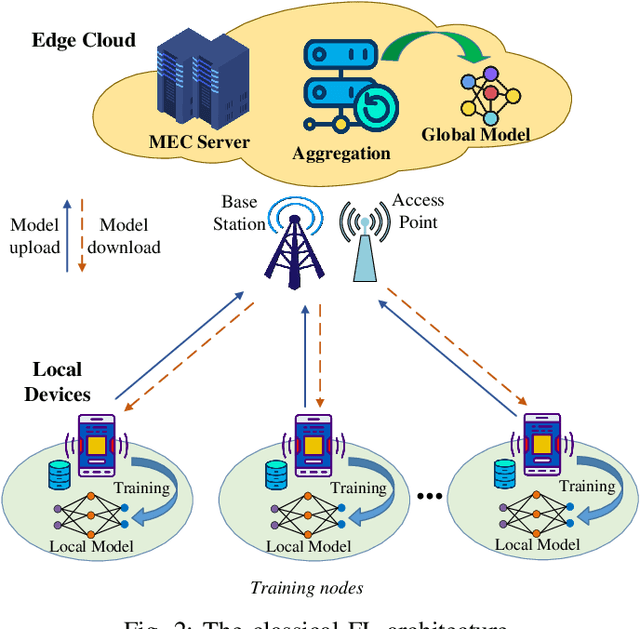
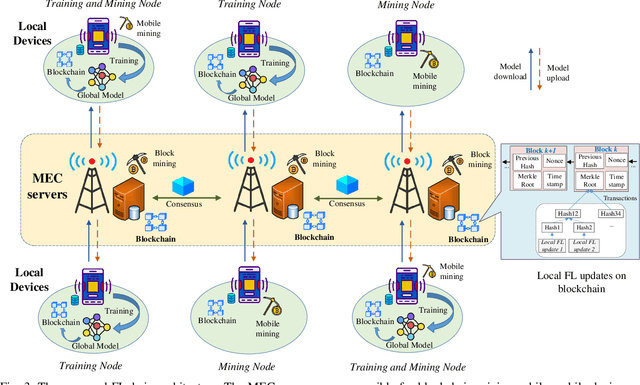
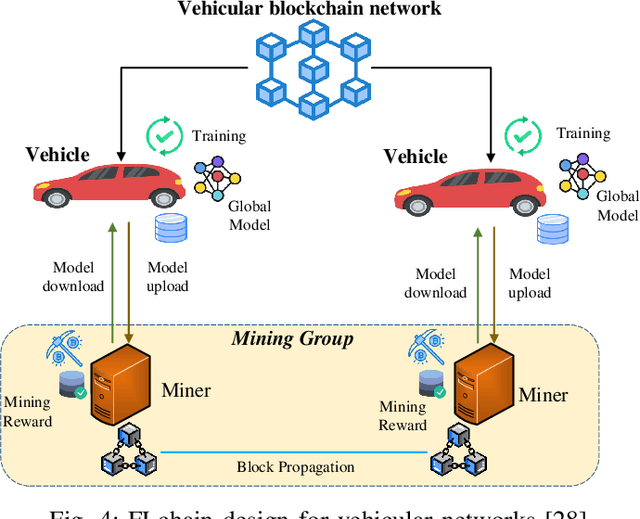
Abstract:Mobile edge computing (MEC) has been envisioned as a promising paradigm to handle the massive volume of data generated from ubiquitous mobile devices for enabling intelligent services with the help of artificial intelligence (AI). Traditionally, AI techniques often require centralized data collection and training in a single entity, e.g., an MEC server, which is now becoming a weak point due to data privacy concerns and high data communication overheads. In this context, federated learning (FL) has been proposed to provide collaborative data training solutions, by coordinating multiple mobile devices to train a shared AI model without exposing their data, which enjoys considerable privacy enhancement. To improve the security and scalability of FL implementation, blockchain as a ledger technology is attractive for realizing decentralized FL training without the need for any central server. Particularly, the integration of FL and blockchain leads to a new paradigm, called FLchain, which potentially transforms intelligent MEC networks into decentralized, secure, and privacy-enhancing systems. This article presents an overview of the fundamental concepts and explores the opportunities of FLchain in MEC networks. We identify several main topics in FLchain design, including communication cost, resource allocation, incentive mechanism, security and privacy protection. The key solutions for FLchain design are provided, and the lessons learned as well as the outlooks are also discussed. Then, we investigate the applications of FLchain in popular MEC domains, such as edge data sharing, edge content caching and edge crowdsensing. Finally, important research challenges and future directions are also highlighted.
Intelligent Radio Signal Processing: A Contemporary Survey
Aug 19, 2020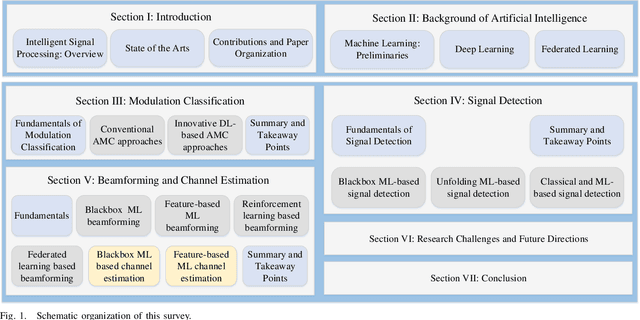
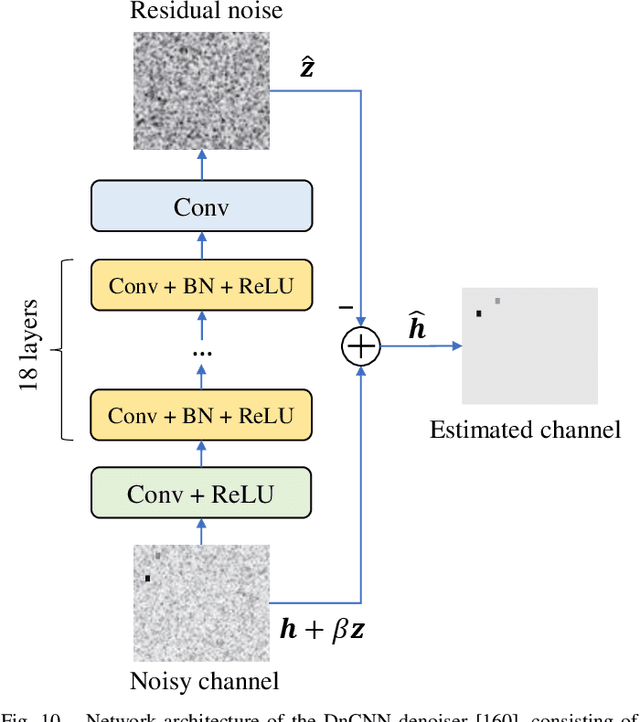
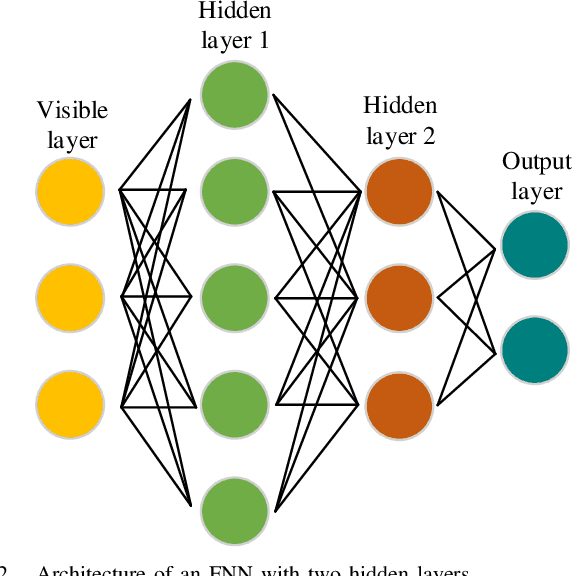
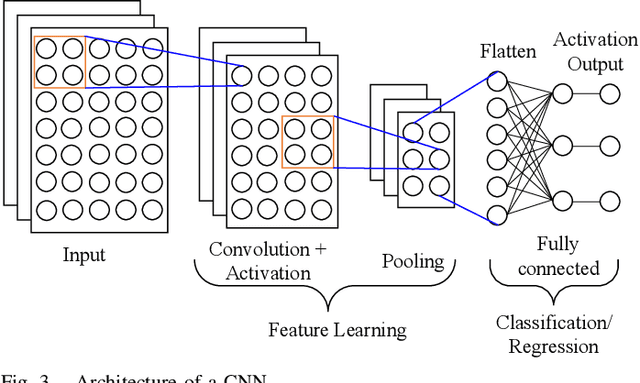
Abstract:Intelligent signal processing for wireless communications is a vital task in modern wireless systems, but it faces new challenges because of network heterogeneity, diverse service requirements, a massive number of connections, and various radio characteristics. Owing to recent advancements in big data and computing technologies, artificial intelligence (AI) has become a useful tool for radio signal processing and has enabled the realization of intelligent radio signal processing. This survey covers four intelligent signal processing topics for the wireless physical layer, including modulation classification, signal detection, beamforming, and channel estimation. In particular, each theme is presented in a dedicated section, starting with the most fundamental principles, followed by a review of up-to-date studies and a summary. To provide the necessary background, we first present a brief overview of AI techniques such as machine learning, deep learning, and federated learning. Finally, we highlight a number of research challenges and future directions in the area of intelligent radio signal processing. We expect this survey to be a good source of information for anyone interested in intelligent radio signal processing, and the perspectives we provide therein will stimulate many more novel ideas and contributions in the future.
Joint Data Compression and MAC Protocol Design for Smartgrids with Renewable Energy
Jun 15, 2016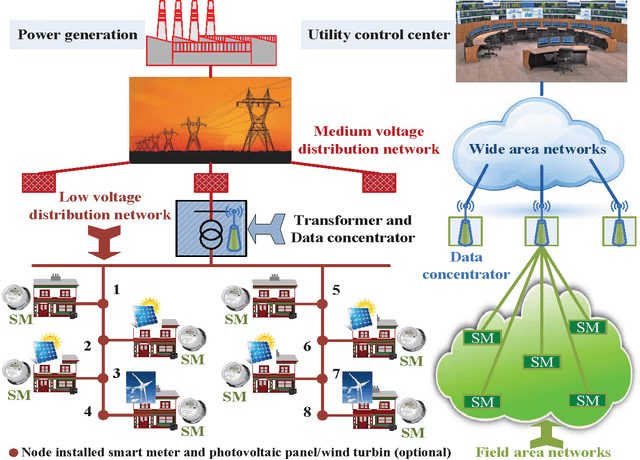
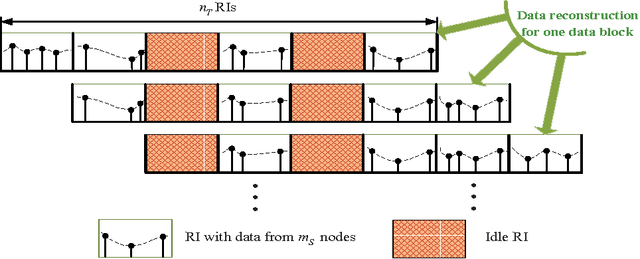
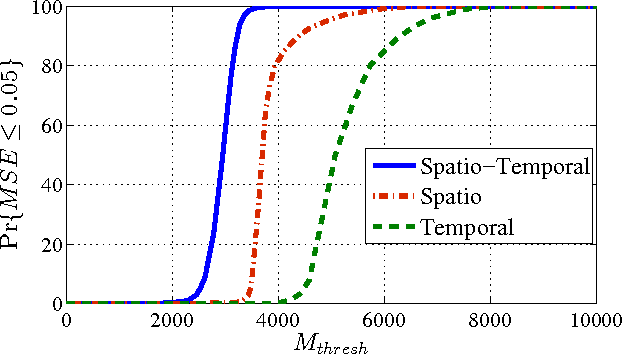
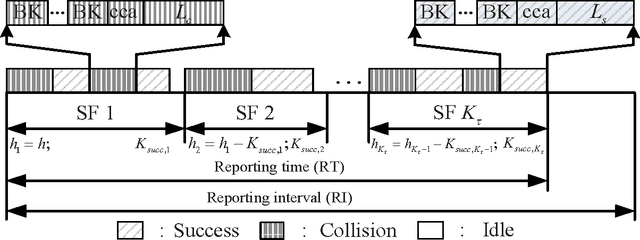
Abstract:In this paper, we consider the joint design of data compression and 802.15.4-based medium access control (MAC) protocol for smartgrids with renewable energy. We study the setting where a number of nodes, each of which comprises electricity load and/or renewable sources, report periodically their injected powers to a data concentrator. Our design exploits the correlation of the reported data in both time and space to efficiently design the data compression using the compressed sensing (CS) technique and theMAC protocol so that the reported data can be recovered reliably within minimum reporting time. Specifically, we perform the following design tasks: i) we employ the two-dimensional (2D) CS technique to compress the reported data in the distributed manner; ii) we propose to adapt the 802.15.4 MAC protocol frame structure to enable efficient data transmission and reliable data reconstruction; and iii) we develop an analytical model based on which we can obtain efficient MAC parameter configuration to minimize the reporting delay. Finally, numerical results are presented to demonstrate the effectiveness of our proposed framework compared to existing solutions.
 Add to Chrome
Add to Chrome Add to Firefox
Add to Firefox Add to Edge
Add to Edge